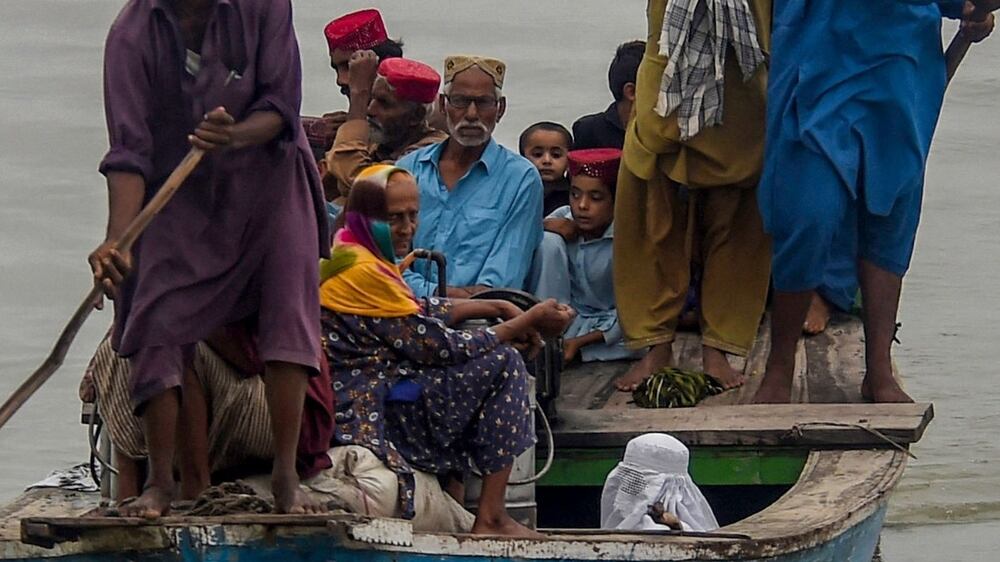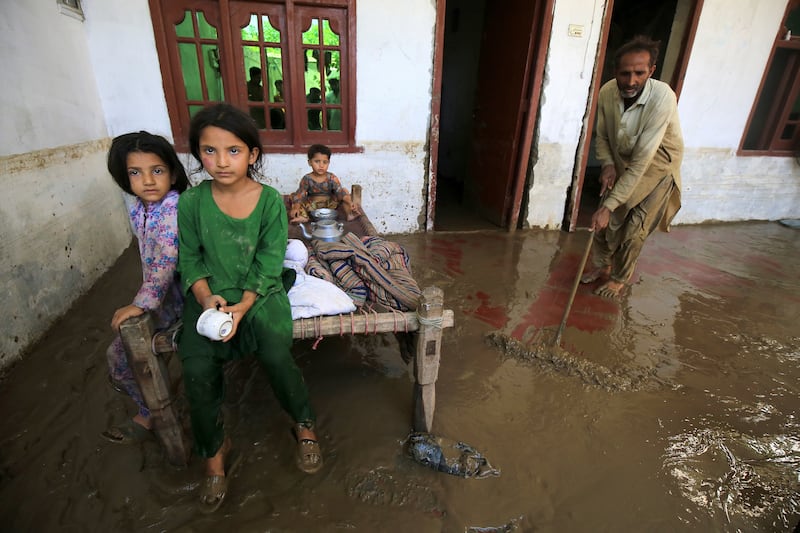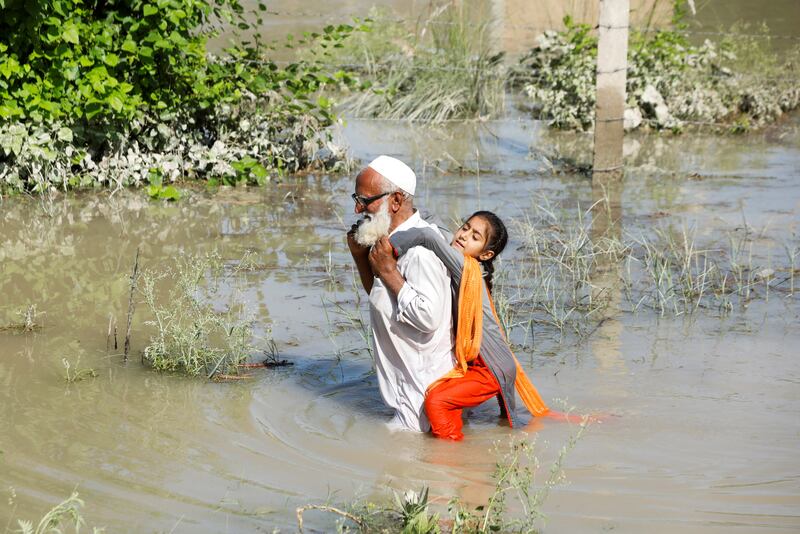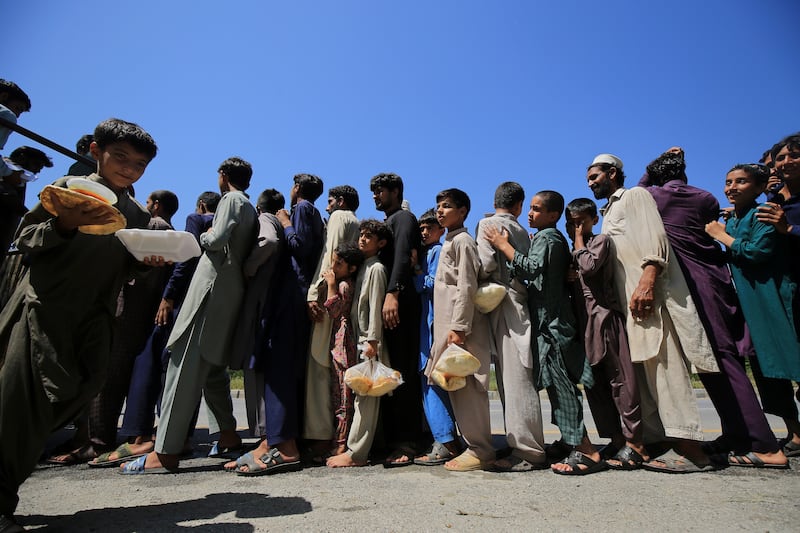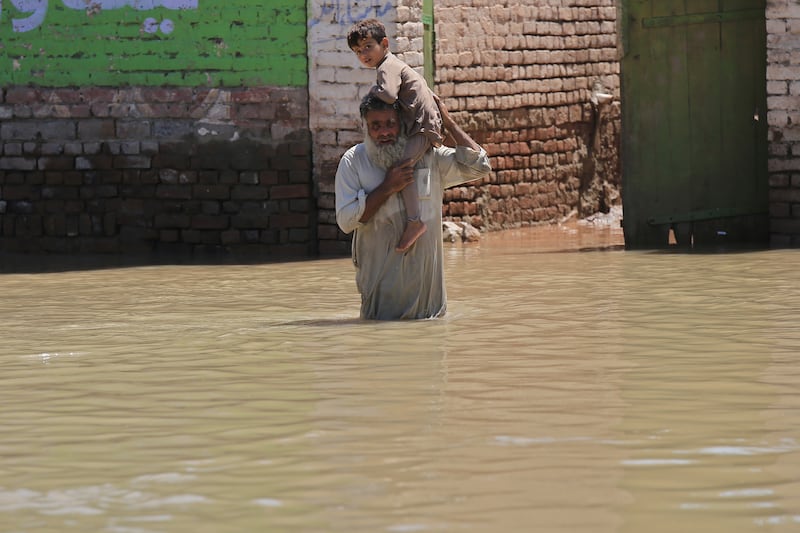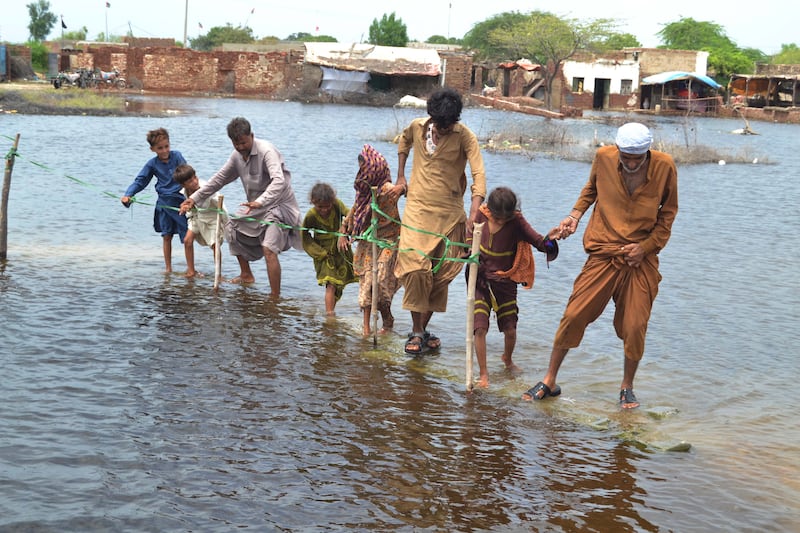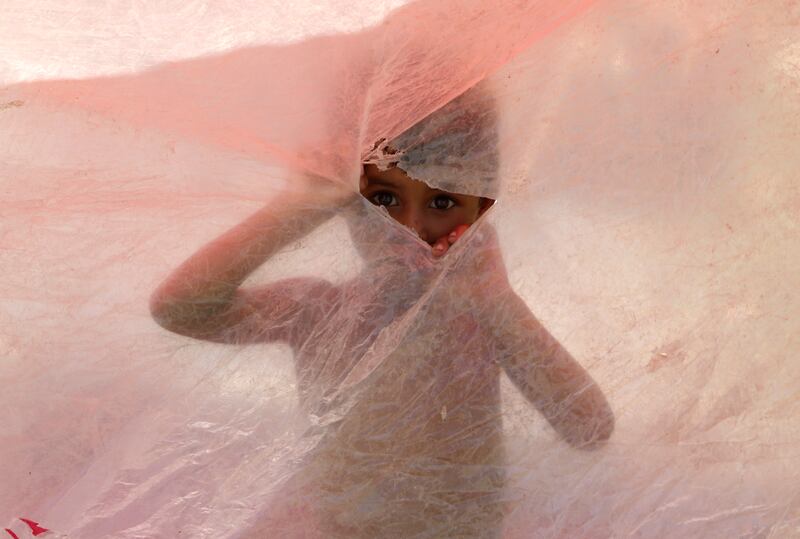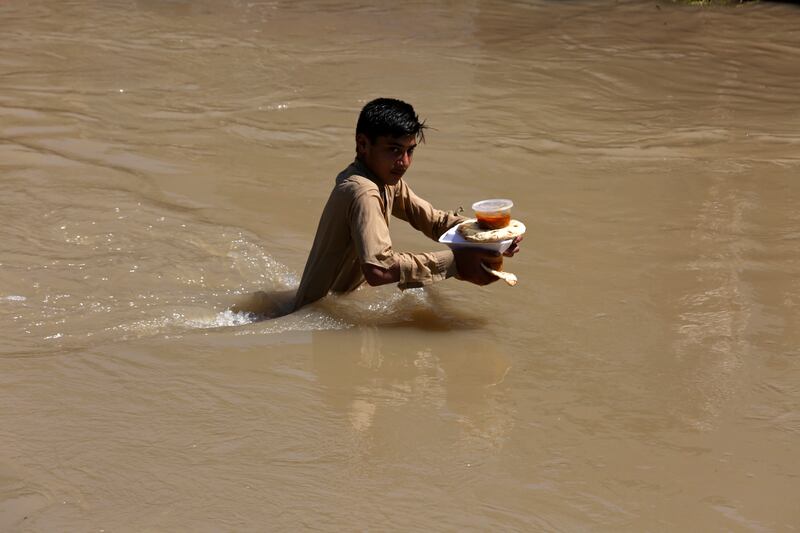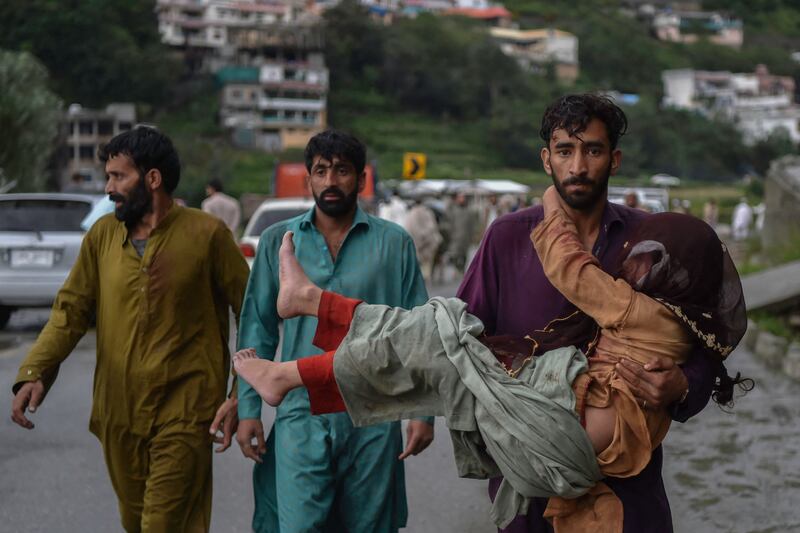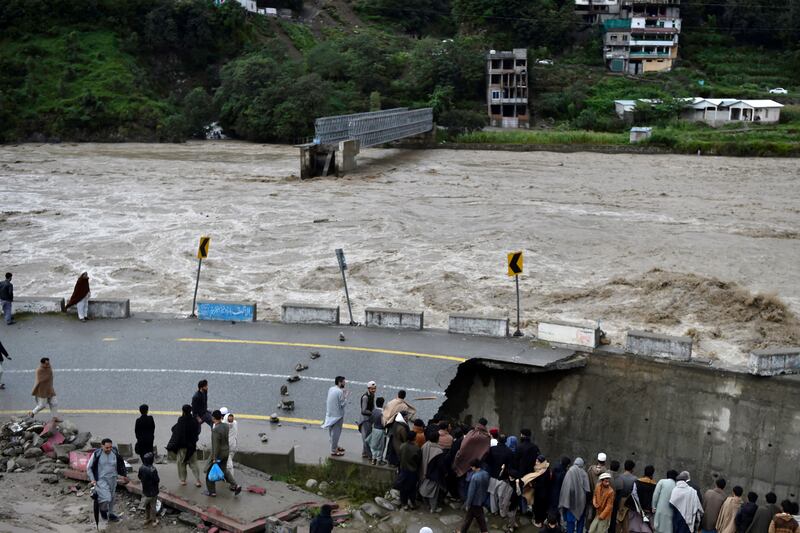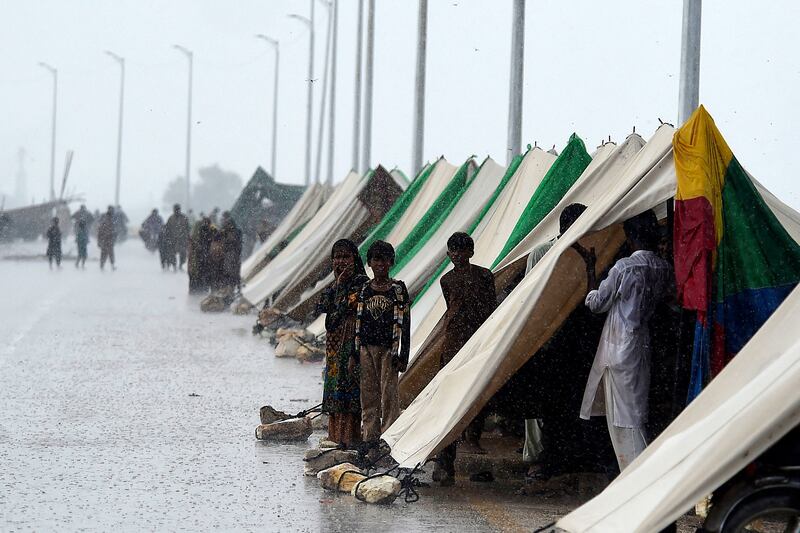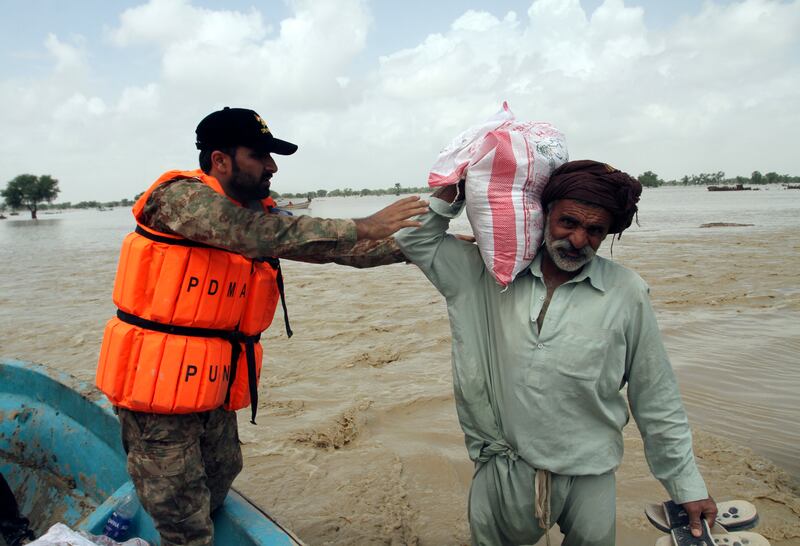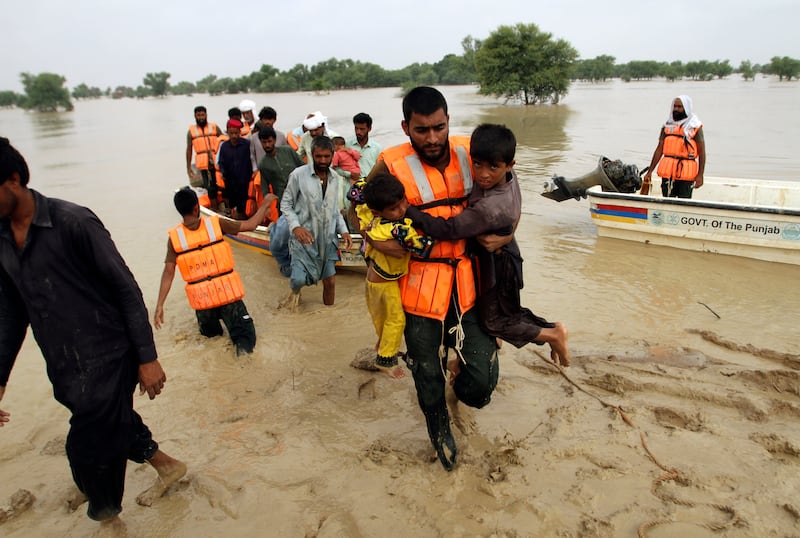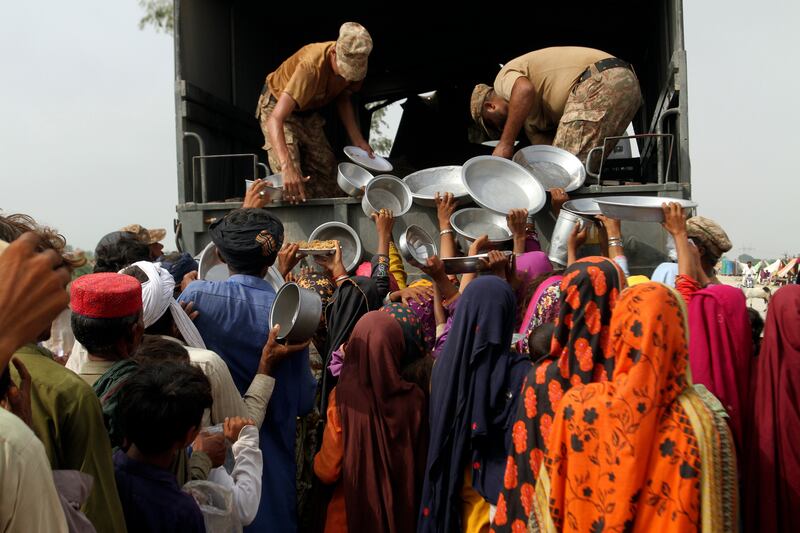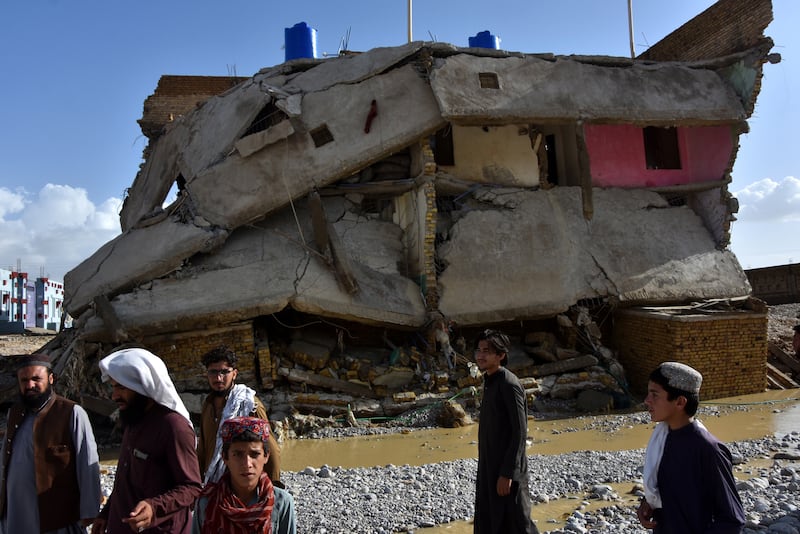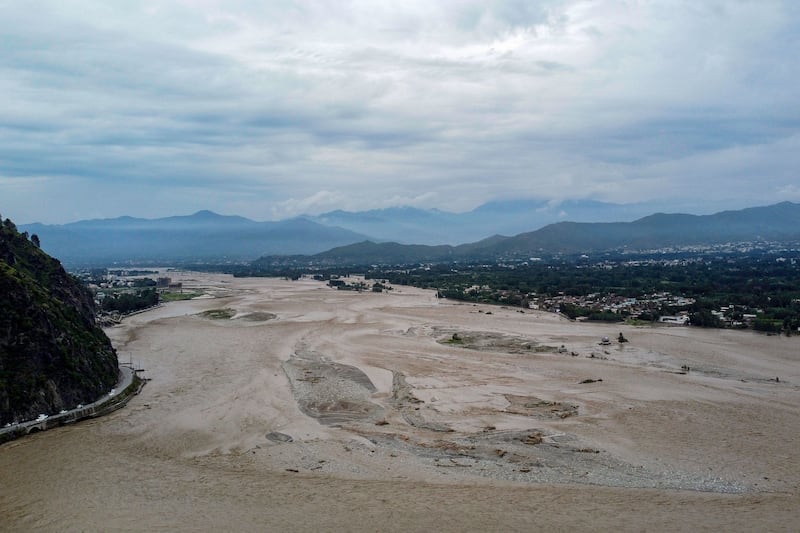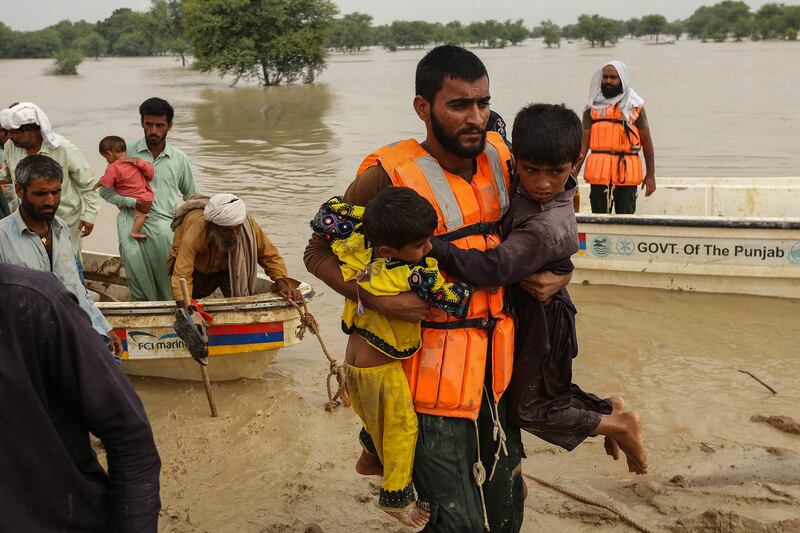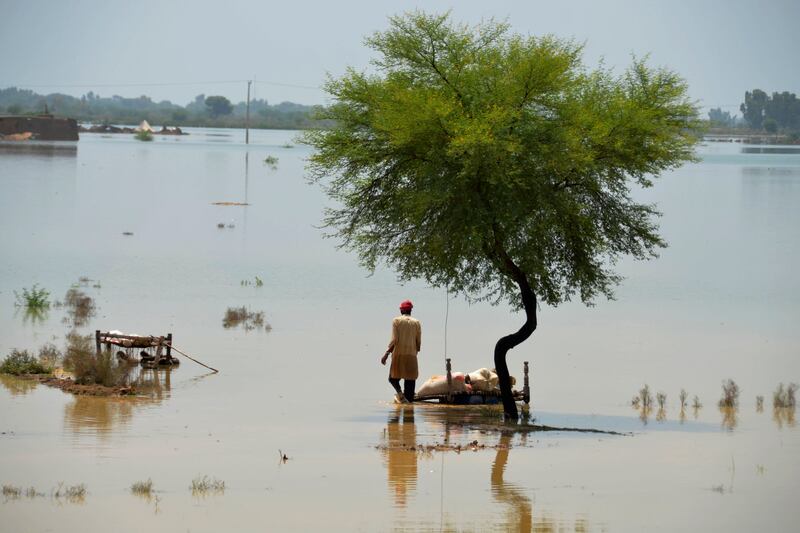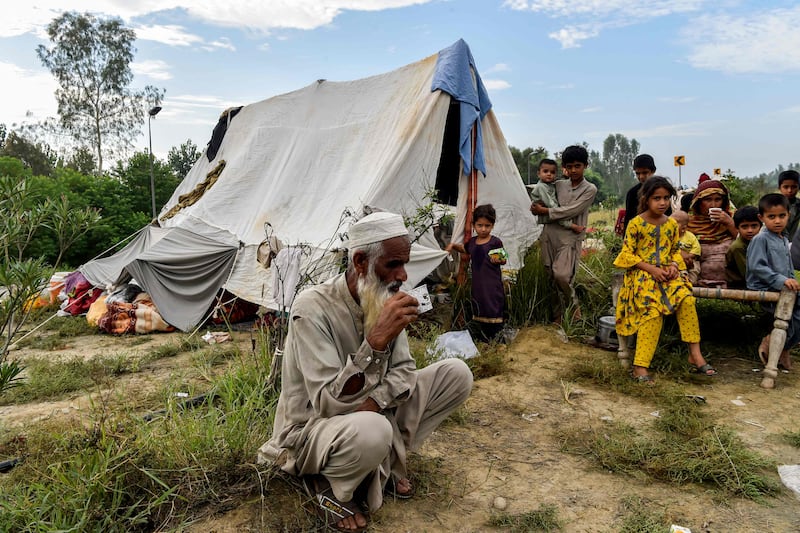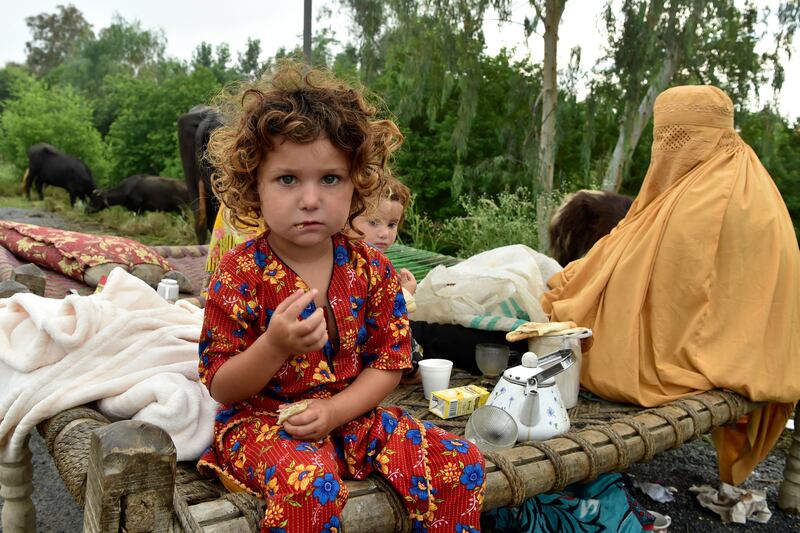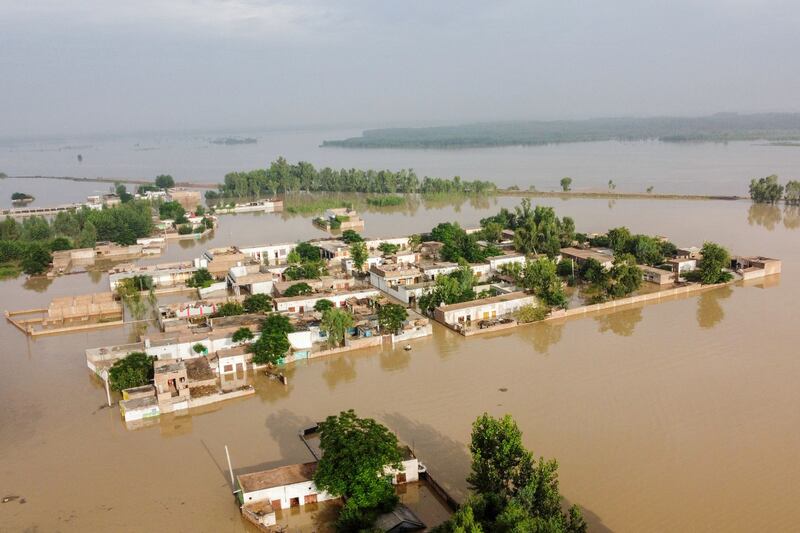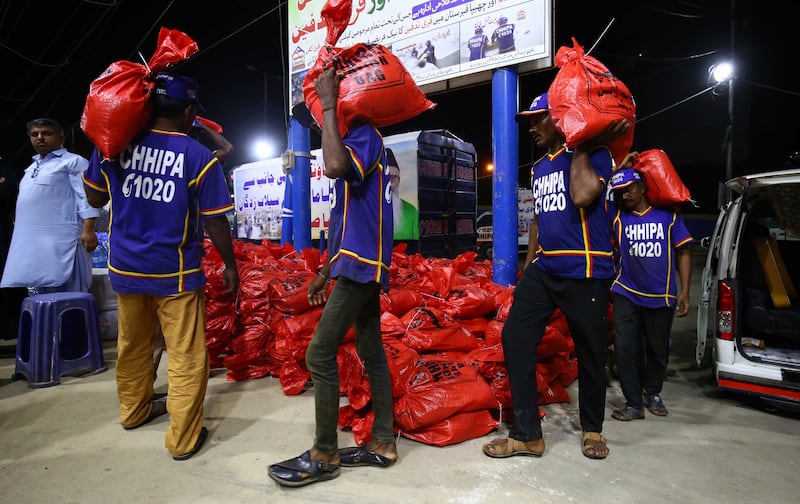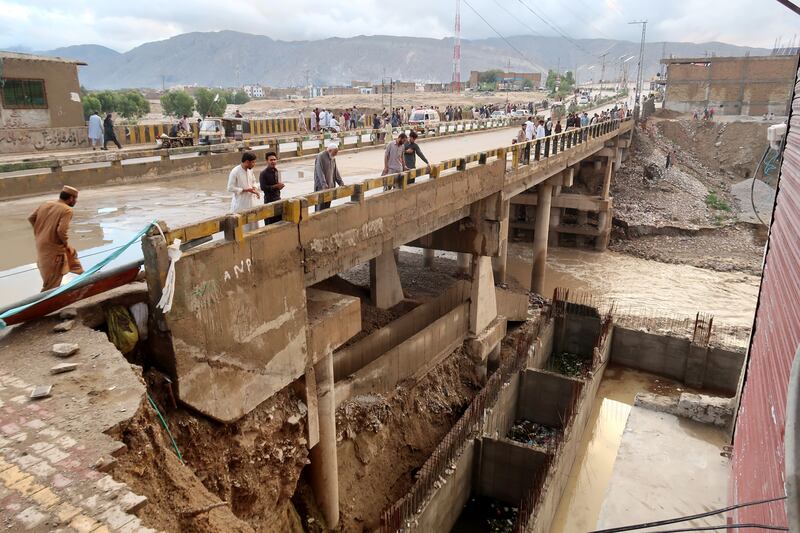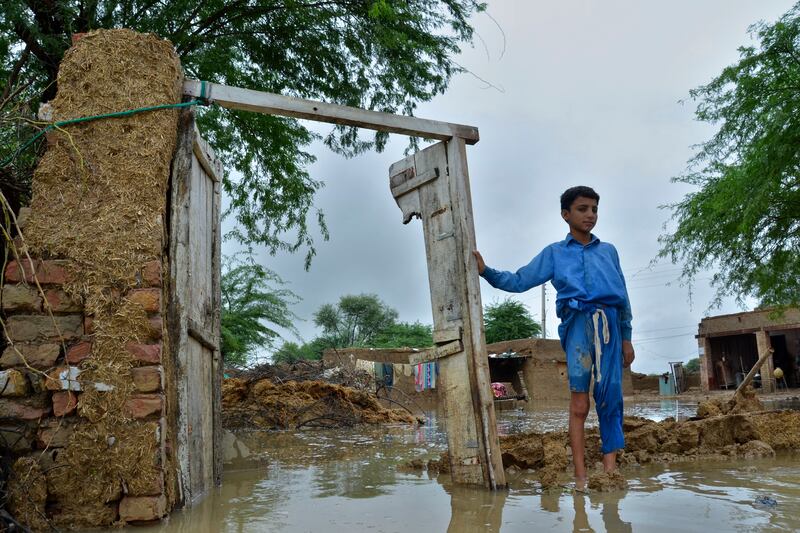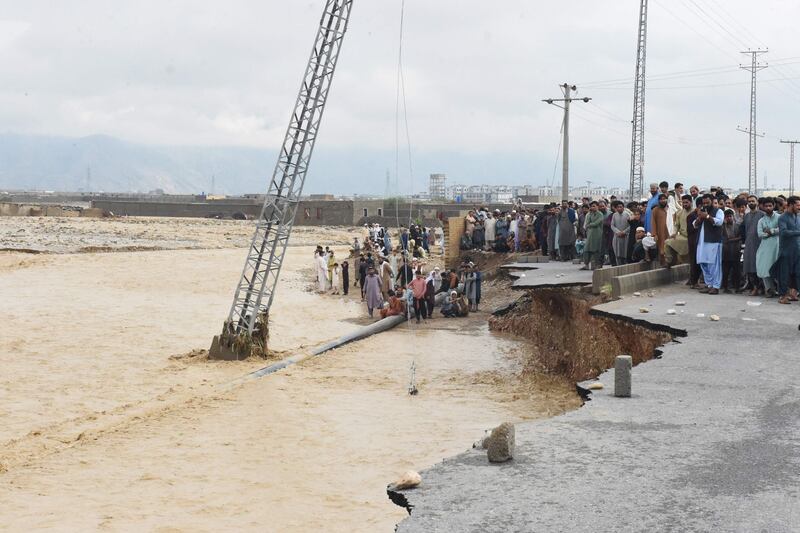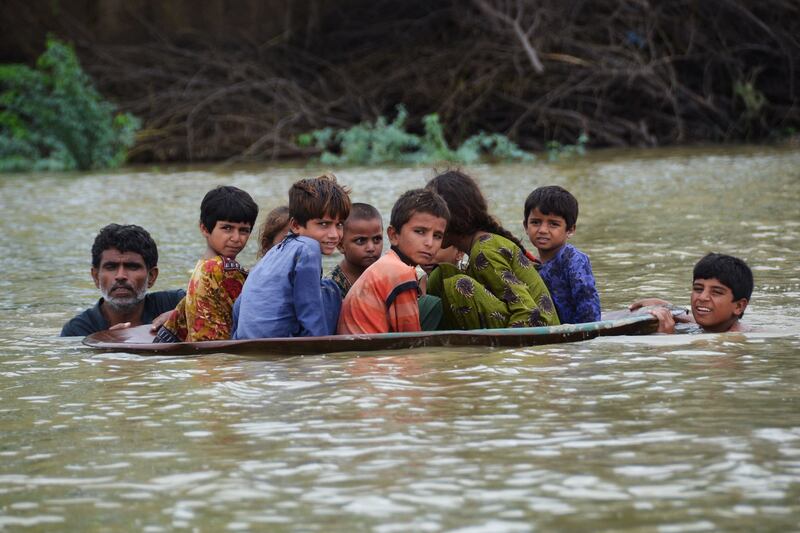International aid began arriving and a relief operation was under way on Monday as tens of millions of Pakistanis struggled to cope with monsoon floods that have killed more than 1,061 people.
The death toll could rise as hundreds of villages in the mountainous north have been cut off by flood-swollen rivers that have washed roads and bridges away.
More than 33 million people — or one in seven Pakistanis — have been affected by the floods, and about a million homes have been damaged, officials said.
The annual monsoon is essential for irrigating crops and replenishing lakes and dams across the Indian subcontinent, but it can also bring destruction.
The UAE began operating an air bridge for humanitarian aid to the country, where a state of emergency has been declared and armed forces mobilised to help with relief efforts.
Climate Change Minister Sherry Rehman called it “the monster monsoon of the decade”.
“Many districts are beginning to look like they’re part of the ocean,” the official told German broadcaster DW News.
“Our helicopter sorties are not finding dry land to drop rations.”
The navy is being deployed for the first time, she said.
This year's floods are comparable to 2010, the worst on record, when more than 2,000 people died and nearly a fifth of the country was under water.
Rains have caused damage worth more than $10 billion, Bloomberg reported, citing local newspaper The News International.
Critical infrastructure failing
Near Sukkur, a city in southern Sindh province and home to a colonial-era flood barrage on the Indus River which is vital to prevent further catastrophe, one farmer lamented the devastation of his rice fields.
The Lloyd Barrage, built in 1932, is capable of discharging 1.4 million cubic metres of water a second through 19 steel gates. The tourist site is a main bridge across the Indus River.
“It has completed 90 years, whereas it had a 50-year guarantee,” Syed Khursheed Shah, the country's Minister for Water Resources told AFP.
“So we are 40 years beyond its guaranteed life.”
A series of canals that travel through farms have been neglected, making them incapable of handling the large volumes of water.
“Silt has been piling up and it is not being removed,” the minister said.
He said the canal has not been dredged in 12 years.
With the build-up, less water can flow through the canals, causing a backlog and more chance of flooding at the Indus.
Millions of acres of rich farmland have been flooded by weeks of non-stop rain, but now the Indus is threatening to burst its banks as water runs downstream from tributaries in the north.
“Our crop spanned over 5,000 acres on which the best quality rice was sowed and is eaten by you and us,” Khalil Ahmed, 70, told AFP. “All that is finished.”
Much of Sindh is now a landscape of water, frustrating a military-led relief operation.
“There are no landing strips or approaches available … our pilots find it difficult to land,” one senior officer told AFP.
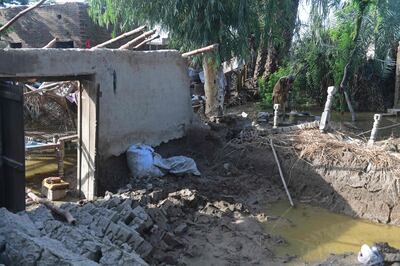
Army helicopters struggled to pluck people to safety in the north, where steep hills and valleys make flying dangerous.
Many rivers in the area — a picturesque tourist destination — have burst their banks, demolishing scores of buildings, including a 150-room hotel that crumbled in a raging torrent.
The flooding could not have come at a worse time for Pakistan, where the economy is in free fall.
Monsoon season
Monsoon season in the Asian Summer can occur any time between June and September, bringing to South Asia 70 to 80 per cent of its annual rainfall.
It is vital for agriculture and therefore important for millions of farmers in a food-insecure region, but also brings destruction every year with landslides and floods.
Poorly maintained infrastructure exacerbates the issue.
While Pakistan has seen an overwhelming amount of rain, eastern and north-eastern India have this year had the lowest amount of July rainfall in more than a century.
